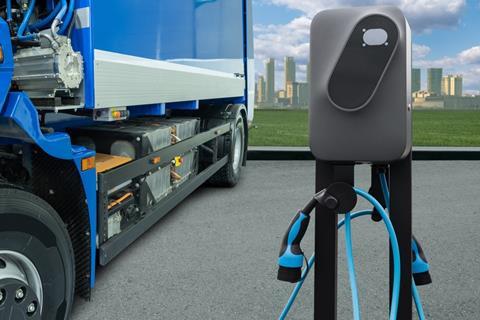The North American Council for Freight Efficiency (NACFE) recently released a comprehensive report titled “Charging Forward with Electric Trucks,” which provides valuable guidance on the implementation of electric truck charging infrastructure.

The report outlines a 10-point plan aimed at assisting fleet operators in effectively transitioning to electric vehicles (EVs) while ensuring a robust and efficient charging network.
One of the aspects emphasised in the report is the need to align the charging process with the economic dynamics of the electric grid. This involves minimising the demand for electricity during charging and maximising the utilisation of off-peak, low-rate periods. The charging infrastructure encompasses both hardware and software components. The hardware aspect encompasses charger plugs, power levels, and the necessary equipment for delivering electricity. On the other hand, rigorous management, typically achieved through software, is essential for optimising overall electricity demand and cost, ensuring that trucks can charge at the lowest possible cost while meeting their operational requirements.
Fleet operators have a range of charger types to choose from, enabling them to select the most suitable option for their charging needs. Level 2 AC charging provides power at 208/240V AC, delivering up to 80 amps and 19.2kW of power. This level of charging is often sufficient for many commercial truck fleets, especially those employing Class 3 through 6 vehicles (European vehicles up to 12t gvw) that return to a central base and remain parked for an extended period, such as overnight.
Level 3 DC charging, also known as DC Fast Charging (DCFC), operates by directly delivering DC electricity to the vehicle, eliminating the need for on-vehicle conversion from AC to DC. DCFC can offer charging rates of up to 350kW or even higher. The choice of chargers must consider the overall cost of operation, including capital costs for infrastructure, electricity costs, associated equipment, and ongoing maintenance and repairs.
To effectively implement electric truck charging infrastructure, the report suggests a 10-step process. First and foremost, fleet operators should assign an internal manager who will champion the project and coordinate efforts among all stakeholders. Consulting with key stakeholders, such as utilities, landlords, authorities having jurisdiction (AHJ), and original equipment manufacturers (OEMs), is crucial to ensure all relevant perspectives are considered.

Understanding the electrical service capacity and determining additional requirements, timelines, and costs should be assessed in collaboration with utility providers and contractors. Fleet operators should carefully select the appropriate electric vehicles based on their fleet’s usage patterns, duty cycles, travel distances, and load characteristics. Charger selection should consider fleet requirements, utility cost structures, and OEM recommendations.
Financing is another important consideration, and fleet operators are encouraged to explore various incentives, grants, rebates, and ownership models offered by local, state, federal, and utility programs. After assessing financing options, the procurement of charging components, including hardware, software, and service plans, should be executed.
The design of the site plan and securing necessary permits may require the involvement of engineering teams, ensuring compliance with relevant regulations. Once the planning and design phase is complete, the construction of the charging infrastructure should be carried out efficiently, adhering to the established schedule. Finally, the commissioning of charging hardware should be performed by authorised agents to ensure proper installation and functionality.













